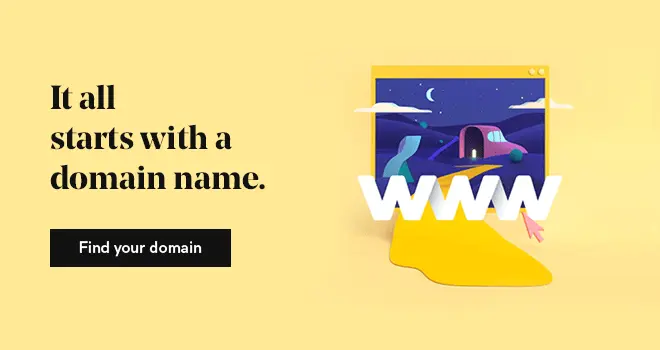With today’s widespread adoption, it’s easy to take the internet for granted. After all, some 3.58 billion people presently go online on a regular basis — or almost half the population of the entire world. No wonder people are too busy browsing to look up from their monitors or put down their mobile devices, and then ask the simple question, “What is a domain name?”
Why ask?
Learning the details of what is a domain name is foundational for your own online success.
It’s also helpful in case, for example, you have a less-than-technical client who’s less savvy about all things digital. With that in mind, let’s take a moment out of your busy day to slow things down and get back to basics. Let’s learn what is a domain name.
Explaining what is a domain name
One way to explain what is a domain name is to note the term is easily interchangeable with web address. And by that we mean the series of characters you’d enter into a browser in order to visit your favorite website or online store.
While digital devices use IP addresses to navigate the internet, humans would find it much too hard to remember all those numerals.
A domain name is usually a memorable term, making it easy to type out in order to visit an online property.
The easiest way to explain what is a domain name is to look at an example — we’ll use example.com. It’s comprised of two parts, which we’ll examine from right to left:
- .com — This is called a top-level domain (or TLD). There’s a broad range of available TLDs today, making them useful for creating an online identity.
- example — This is called a subdomain. It’s an important component, as it’s typically the longest part of a domain and, as such, presents the greatest opportunity for branding.
Hopefully, this is very straightforward. Now that we’ve identified the basics of what is a domain name, let’s look at some other important aspects to consider.
Finding a domain name

Once you’ve learned what is a domain name, you’re likely eager to secure one for your own use. This you can accomplish by checking with a registrar to make sure your desired domain is still available, and then registering it — which establishes you as the registrant.
Seems easy?
While the process for registering a domain name is quite simple, choosing the domain you want requires quite a bit more thought. For example, .com isn’t the only available TLD available today. In fact, there are a number of these domain extensions — and more become available on a frequent basis.
Getting more from your domain name
Now that we understand what is a domain name, let’s examine how you can go beyond the basics to get more from your investment. Here a few of the most popular ways:
Choosing a TLD
You’ll recall we just discussed the availability of unique TLDs. These, in fact, can be used to designate the purpose of your website. For example, a tech company could use the .tech domain extension to boldly proclaim the nature of their business.
Professional email
A user of free email might not realize they can replace the TLD and subdomain in their @gmail.com or @aol.com email address to use the domain they just registered. The result — such as @example.tech — represents are far more professional approach to using email.
Domain investing
Imagine if inspiration struck, and you registered a domain based on the name of the mythological Greek goddess of victory. When a certain shoe manufacturer looked to create their website, you’d be in a prime position to sell them your domain for a healthy profit. In fact, domain investing has grown to become its own industry of sorts.
As you can see, there’s quite a bit more to take on once you’ve learned what is a domain name. Like any other purchase, there are many ways you could (and should) maximize its value.
Closing thoughts on domain names
It’s interesting to think that, when pressed, many regular users of the internet might be unable to answer the simple question, “What is a domain name?” LIke any kind of technology, an understanding of the basics provides a solid platform for more advanced use.
Hopefully, this post gave you a basic understanding of what is a domain name, as well as how to get one for yourself, and then maximize its value. Just keep in mind that, like the internet itself, there’s nearly no limit to how much knowledge you can acquire when navigating the digital realm.







